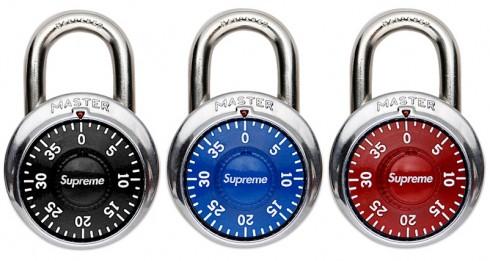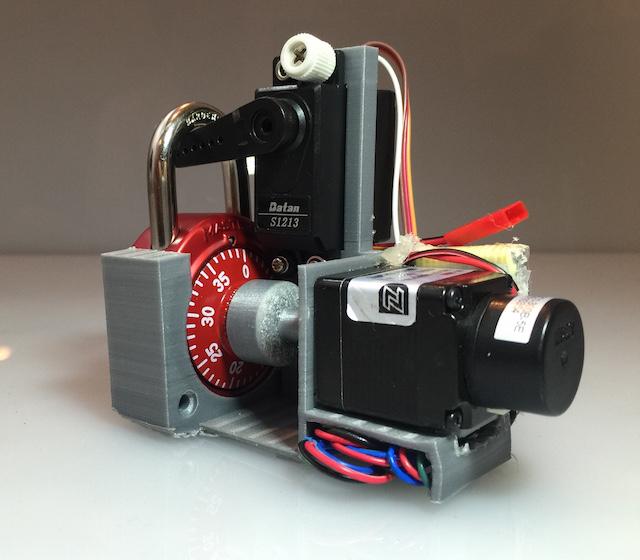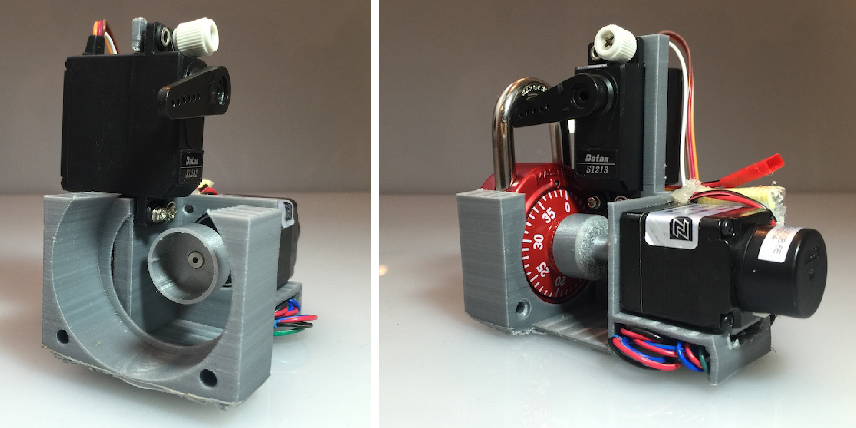 While we aren’t advocating breaking and entering for any nefarious agendas, the reality is that being able to crack your own lock sure does help when you’ve padlocked up some valuable items–whether it’s a storage shed full of valuable tools or even your old bike on the corner–and walked away for a while, doing as we all have: forgetting the combination. This is definitely a common problem–and one that keeps locksmiths in business. While those valuable little numbers may have been left and lost on a tiny scrap of paper somewhere, if you have your own C-C-C-C Combo Breaker, it’s as easy as doing some ‘applied hacking.’
While we aren’t advocating breaking and entering for any nefarious agendas, the reality is that being able to crack your own lock sure does help when you’ve padlocked up some valuable items–whether it’s a storage shed full of valuable tools or even your old bike on the corner–and walked away for a while, doing as we all have: forgetting the combination. This is definitely a common problem–and one that keeps locksmiths in business. While those valuable little numbers may have been left and lost on a tiny scrap of paper somewhere, if you have your own C-C-C-C Combo Breaker, it’s as easy as doing some ‘applied hacking.’
In less than thirty seconds, with this genius design by Samy Kamkar, you’ll be able to crack open any Master combination lock, taking care of business for forgotten storage lockers, devices made a little too secure by yourself, and everything in between. Employing Arduino software and a new technique that should have you in business after eight attempts or fewer, Kamkar gives a concise plan for future hacking of locks, and that’s all completely above board, of c-c-c-c-ourse!
For the special technique on learning how to actually crack the lock in just eight takes, you will want to go back to school with Kamkar for what is basically Combination Lock Cracking 101. Kamkar does expect you to have that downpat before you proceed here, since you will need a knowledge of how to navigate the shackle, feeling resistance, as well as calculating it until you have the combo cracked. It’s frighteningly simple, but you’ll be greatly relieved when you have that temporarily enigmatic lock readily undone.
This DIY battery-operated gizmo by the king of Master lock cracking is simple enough in that it works off software supplied by Kamkar at GitHub, coupled with an Arduino Nano as the brains of the outfit along with an inexpensive, smaller pancake stepper motor, meant for compact precision. For the driver, he used an Easy Driver that’s simple to control.
 Before you get started, think about how you’ll plan on 3D printing the part of the device that will grab on to the combination lock’s dial, if you don’t have equipment at home. The 3D model requires only basic digital design and Kamkar recommends downloading free CAD software if you don’t currently have any.
Before you get started, think about how you’ll plan on 3D printing the part of the device that will grab on to the combination lock’s dial, if you don’t have equipment at home. The 3D model requires only basic digital design and Kamkar recommends downloading free CAD software if you don’t currently have any.
Kamkar recommends measuring, as per his video, for the lock and dial. He then used Autodesk 360 to draw the shaft to the appropriate thickness, and patterning it correctly. Once it’s all set for printing, you’ll need to print the 3D model and then get ready to hook it up to the electronics. It’s really quite amazing how the device hooks right on to the lock in question, using Kamkar’s software and a little ‘brute force’ to get the lock open.
Hardware required:
- Arduino Nano – a 5-volt microcontroller works as your central intelligence for the lock cracking device
- Allegro A4988 – this is a smaller Easy Driver used for precision, with capability to drive a stepper motor up to 30V at 750mA
- Stepper motor – either simple or double shaft stepper motor, depending on whether you are going for beginner or advanced level (if you are going with advanced, you will also need the HKT22 Optical Rotary Encoder to go with it)
- Analog Feedback Servo – necessary for torque to lift the shackle, including an additional wire for analog feedback to detect opening of shackle
- L7805 Voltage Regulator – this goes with the analog feedback servo, and you’ll want an external voltage regulator for sending ‘enough juice’ to the servo, and to avoid damaging your Arduino.
- 500mAh 3S Lipo Battery – very effective, and at 500mAh will last from 30 to 120 minutes without recharge
- LiPo Charger – this one is not absolutely necessary, but helpful if you need to recharge the battery, and need a charger supporting 3-cell LiPos.
- Arctic Alumina Thermal Adhesive – good thermal adhesive for attaching the heatsink to the stepper motor driver.
- Digital Calipers – needed to measure the lock for cracking
- Breadboard and Wires – helpful tools, but optional
Software can be obtained in totality here at github.
Are you interested in 3D printing and assembling this DIY lock cracker? Discuss in the 3D Printed Lock Cracking Device forum thread over at 3DPB.com. Check out Kamkar’s video, below, detailing the Combo Breaker, as well as more images.
Subscribe to Our Email Newsletter
Stay up-to-date on all the latest news from the 3D printing industry and receive information and offers from third party vendors.
You May Also Like
3D Printing News Briefs, April 13, 2024: Robotics, Orthotics, & Hypersonics
In 3D Printing News Briefs today, we’re focusing first on robotics, as Carnegie Mellon University’s new Robotics Innovation Center will house several community outreach programs, and Ugogo3D is now working...
Rail Giant Alstom Saves $15M with 3D Printing Automation Software 3D Spark
3D Spark has entered into a three-year deal with the rail giant Alstom. Alstom, a transport behemoth with annual revenues of $16 billion, specializes in the manufacture of trains, trams,...
Meltio Expands Global Reach with New Partnerships in the Americas and Europe
Spanish 3D printing manufacturer Meltio has expanded its sales network across the globe. With the addition of three new partners in the United States, Brazil, Argentina, and Italy, Meltio aims...
3D Printing Webinar and Event Roundup: April 7, 2024
Webinars and events in the 3D printing industry are picking back up this week! Sea-Air-Space is coming to Maryland, and SAE International is sponsoring a 3D Systems webinar about 3D...


































